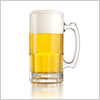Your cart

 Belgium: Beer industry going through difficult time
Belgium: Beer industry going through difficult time
Belgian breweries are going through a difficult time. Beer sales are dropping fast, particularly exports. Breweries are closing. Bars are struggling to balance the books. “Over the last couple of years, almost every brewer I’ve spoken to — small, medium, and larger — is really struggling,” says Breandán Kearney, author of the recently published “Hidden Beers Of Belgium.” “It’s disheartening.”
According to Mark Van Pee, who has been tracking brewery numbers for consumer group Zythos for the past decade, Belgian brewing’s modern peak came in 2022, when there were 430 physical breweries and 309 “beer companies,” which don’t own brewing equipment. Now there are 413 and 300 brewing companies, Vinepair reported on December 24.
Thirty-six breweries closed last year; 31 more have followed in 2024. “They’re mostly very small breweries,” Van Pee says. “A lot of them are one-man bands.”
But bigger operations are also suffering. De Struise Brouwers, once a global craft darling, has seen its sales slump; Brewery Roman in Mater, family-owned since the 16th century, has decided to postpone indefinitely the construction of a visitors’ center; Het Anker, makers of the iconic Gouden Carolus, is for sale (the official reason given is lack of family succession); and small-scale consolidation — as when two small Ghent breweries, DOK and the Ministry of Belgian Beer, amalgamated in 2022 — is increasingly common.
In Brussels, meanwhile, two breweries have shut this year — most notably En Stoemelings, one of the leaders of the city’s recent brewing revival. It has sold its equipment in order to pay off debts, but will continue to contract-brew. “They were ground down by four years of muddling through,” says Eoghan Walsh, the Brussels-based author of “A History of Brussels Beer in 50 Objects,” which was launched at En Stoemelings in 2022. “They really struggled through the pandemic.”
Many of Brussels’ bars are finding life difficult, too, he adds. Staff are hard to come by or too expensive, and opening hours have been cut.
There are still a lot of breweries, though, for a small country of just under 12 million people with a contracting market. You might assume this would fuel resentment toward the 300 non-brewing beer companies, and it does, but not universally. As Van Pee points out, around 25 percent of Belgian breweries are making beer for these companies. It’s helping them to survive.
In the Netherlands, Belgium’s northern neighbor, beer has been buoyed over the past decade by the rise of American-style, hop-forward craft beer. But it hasn’t taken off in the same way in Belgium, according to Koen Kostermans, co-owner of modern bottle shop/bar Hops ‘N More in the student-heavy city of Leuven.
His most popular beers are IPAs but that’s not typical in Belgium. “We have very loyal customers, and [our customer base] grows step by step, but we don’t see big growth,” Kostermans says. “What we sell is still a niche product in Belgium.” Most of his customers are in the 30–50 age range, as younger people are looking for “volume, not quality.” Many young people, here as elsewhere, are drinking less than previous generations, too.
Hops ‘N More sells around 20 non-alcoholic beer brands, a sector that now represents around 5 percent of the Belgian market. It’s an opportunity for Belgian brewers, although the cost of technology gives big players an advantage — and that’s not all, according to Kearney.
Family brewers are being pressured by supermarkets and distributors to add non-alcoholic beer to their range or risk losing their entire listing. “So they either have to invest in really expensive equipment or contract it at one of the big breweries,” he says.
Non-alcoholic beer also presents a technical challenge for smaller Belgian brewers, whose products tend to be higher in ABV than their counterparts in Germany or the U.K., for example.
This rise of non-alcoholic beer has gone hand-in-hand with a government campaign against drink-driving, which remains a serious issue in Belgium. ABVs are dropping all over, even if not everyone wants to make non-alcoholic beer. “Anecdotally, I see ABVs going down — either by a point or two, or by [breweries] bringing out new beers,” says Walsh.
The government’s campaign has drawn Zythos’s ire. “We know alcohol is not healthy, but [the government’s view] is one-dimensional,” Van Pee says. “There are lots of positive aspects to moderate consumption of a product like beer.”
Belgium’s deep brewing roots may prove a trump card, according to Van Pee. With more long-established breweries, Belgium is less exposed to the problems beer faces in the Netherlands, where recent growth has been more dramatic. These new Dutch breweries had to invest heavily to grow and are now more exposed in a shrinking market. “They’ve been hit hard,” he says.
There is an element in the Belgian character, Kearney notes, that has served them well before and will again. “Belgians are pragmatic,” he says. “They are good problem solvers. I think whatever problems there are now, they’ll find a solution.”
Înapoi
(libra 0.6680 sec.)





